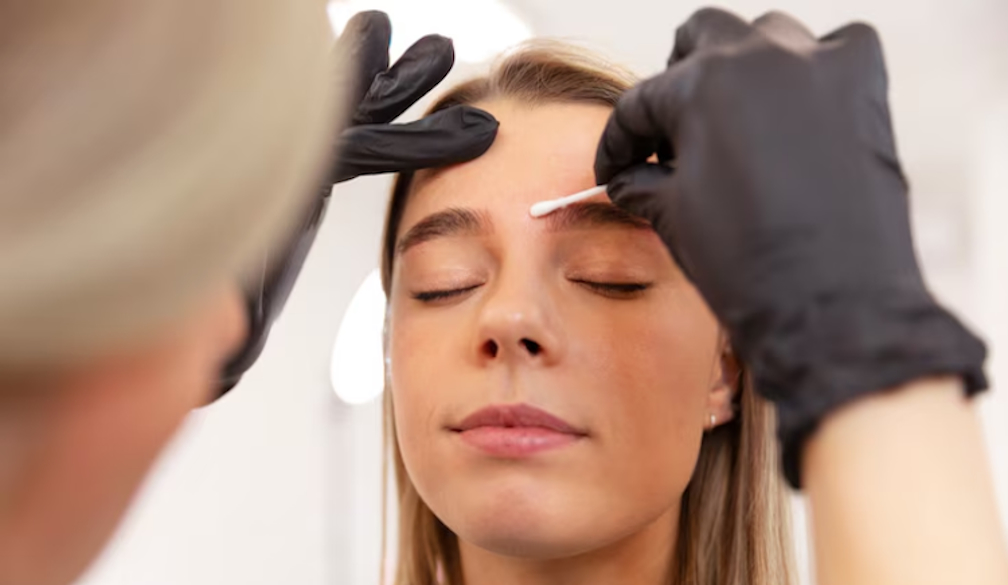Things You Should Know About Endoscopic Brow Lift and Brow Lift Surgery

Introduction to Endoscopic Brow Lift
Endoscopic brow lift, also known as forehead rejuvenation surgery, is a cosmetic procedure designed to elevate and reshape the brow area. It is often performed to address sagging brows, forehead wrinkles, and hooding of the upper eyelids. Unlike traditional brow lift surgery, which involves larger incisions and more extensive tissue manipulation, the endoscopic approach utilises small incisions and a tiny camera (endoscope) to achieve optimal results.
Benefits of Endoscopic Brow Lift
Reduced Scarring
One of the primary advantages of an endoscopic brow lift is the minimal scarring it leaves behind. The use of small incisions hidden within the hairline results in virtually undetectable scars, leading to a more natural-looking outcome.
Shorter Recovery Time
Compared to traditional brow lift surgery, which may require several weeks of downtime, the endoscopic technique typically involves a shorter recovery period. Patients can expect to return to their normal activities within a week or two after the procedure.
Natural-looking Results
Endoscopic brow lift surgery in Sydney allows for precise manipulation of the underlying tissues, resulting in a more natural and refreshed appearance. By lifting the brow and smoothing out forehead wrinkles, patients can achieve a youthful yet subtle enhancement without looking overly "done." This advanced procedure is available to individuals seeking facial rejuvenation in Sydney, offering the benefits of reduced scarring, shorter recovery time, and natural-looking results.
Understanding Brow Lift Surgery
Traditional Brow Lift vs. Endoscopic Brow Lift
While both procedures aim to rejuvenate the brow area, there are significant differences between traditional brow lift surgery and the endoscopic approach. Traditional brow lift surgery involves longer incisions along the hairline or within the scalp, which may result in more visible scarring and a longer recovery period. In contrast, the endoscopic technique utilises small incisions and specialised instruments to achieve similar results with less trauma to the surrounding tissues.
Candidates for Brow Lift Surgery
Ideal candidates for brow lift surgery in Sydney are individuals bothered by sagging brows, forehead wrinkles, or excess skin in the upper eyelid area. They should be in good overall health and have realistic expectations about the outcomes of the procedure. A consultation with a board-certified plastic surgeon is essential to determine candidacy and discuss the most suitable treatment options tailored to their specific needs and goals.
Procedure of Endoscopic Brow Lift
Pre-operative Preparations
Before undergoing an endoscopic brow lift, patients will meet with their surgeon to discuss their goals and expectations. Pre-operative instructions may include avoiding certain medications that can increase the risk of bleeding, quitting smoking, and arranging for transportation to and from the surgical facility.
Steps Involved in the Surgery
During the procedure, the surgeon will make small incisions within the hairline and insert an endoscope—a thin, flexible tube with a camera attached—to visualise the underlying structures. Using specialised instruments, the surgeon will elevate the brow tissues, reposition the muscles, and remove excess skin if necessary. Once the desired improvements are achieved, the incisions are closed with sutures, and a dressing is applied to protect the surgical site.
Recovery Process
Following an endoscopic brow lift, patients may experience mild discomfort, swelling, and bruising, which can be managed with pain medication and cold compresses. It is essential to follow post-operative instructions provided by the surgeon, such as keeping the head elevated, avoiding strenuous activities, and attending follow-up appointments for monitoring progress. Most patients can resume normal activities within a week, although strenuous exercise should be avoided for several weeks to ensure proper healing.
Risks and Complications
Potential Risks Associated with Endoscopic Brow Lift
While endoscopic brow lift surgery is generally safe, like any surgical procedure, it carries certain risks and complications. These may include infection, bleeding, adverse reactions to anaesthesia, asymmetry, nerve damage, and hair loss near the incision sites. However, choosing a skilled and experienced surgeon can minimise the risk of complications and ensure optimal results.
How to Minimise Risks
To minimise the risk of complications, it is essential to follow all preoperative and post-operative instructions provided by the surgeon. Additionally, choosing a board-certified plastic surgeon with extensive experience in endoscopic brow lift surgery can significantly reduce the likelihood of adverse outcomes.
Cost of Endoscopic Brow Lift
Factors Influencing the Cost
The cost of an endoscopic brow lift can vary depending on several factors, including the surgeon's expertise, geographic location, facility fees, anaesthesia fees, and the extent of the procedure required. In general, endoscopic brow lift surgery may be more expensive than non-surgical alternatives such as Botox or dermal fillers but is often more cost-effective than traditional brow lift surgery due to shorter operating times and reduced recovery expenses.
Affordability Compared to Traditional Brow Lift
While the initial cost of an endoscopic brow lift may be higher than that of traditional brow lift surgery, it is essential to consider the long-term benefits and potential cost savings associated with the procedure. With shorter recovery times and less post-operative discomfort, patients may incur fewer expenses related to medication, follow-up appointments, and time off work, making endoscopic brow lift surgery a more affordable option in the long run.
Results and Longevity
Expected Results
The results of an endoscopic brow lift are typically visible immediately following the procedure, although some swelling and bruising may obscure the final outcome initially. As the swelling resolves and the tissues heal, patients can expect a smoother, more lifted appearance in the brow and forehead area, with a reduction in wrinkles and fine lines.
Duration of Results
While the longevity of results can vary from person to person, endoscopic brow lift surgery is designed to provide long-lasting improvements in the appearance of the brow and forehead. With proper care and maintenance, including sun protection and a healthy lifestyle, the results of an endoscopic brow lift can endure for many years, helping patients maintain a youthful and refreshed appearance over time.
Choosing the Right Surgeon
Qualities to Look for in a Surgeon
When considering endoscopic brow lift surgery, it is crucial to choose a board-certified plastic surgeon with extensive experience and a track record of successful outcomes. Look for a surgeon who specialises in facial rejuvenation procedures and has a keen understanding of facial anatomy. Additionally, take the time to review before-and-after photos, read patient testimonials, and schedule a consultation to discuss your goals and concerns in detail.
Importance of Board Certification
Board certification demonstrates that a surgeon has undergone rigorous training and meets the highest standards of safety and competence in their field. When selecting a surgeon for endoscopic brow lift surgery, ensure they are certified by a reputable board such as the American Board of Plastic Surgery or the American Board of Facial Plastic and Reconstructive Surgery. This certification ensures that the surgeon has the necessary skills and expertise to perform the procedure safely and effectively.
Before and After Care Tips
Pre-operative Instructions
Before undergoing an endoscopic brow lift, patients may be advised to:
- Discontinue certain medications that can increase the risk of bleeding, such as aspirin or non-steroidal anti-inflammatory drugs (NSAIDs).
- Quit smoking to promote better healing and reduce the risk of complications.
- Arrange for transportation to and from the surgical facility on the day of the procedure.
- Follow any additional instructions provided by the surgeon to ensure optimal results.
Post-operative Care Guidelines
Following an endoscopic brow lift, patients may be instructed to:
Keep the head elevated to reduce swelling and promote healing.Apply cold compresses to the surgical site to minimise discomfort and swelling.
Take prescribed pain medication as directed to manage any postoperative discomfort.
Avoid strenuous activities, heavy lifting, and vigorous exercise for several weeks.
Attend follow-up appointments with the surgeon for monitoring progress and addressing any concerns.
Conclusion
In conclusion, endoscopic brow lift surgery offers a minimally invasive solution for individuals seeking to rejuvenate their appearance and restore a more youthful-looking brow and forehead. With its numerous benefits, including reduced scarring, shorter recovery time, and natural-looking results, the endoscopic approach has become increasingly popular among patients seeking facial rejuvenation procedures. By understanding the procedure, its risks and benefits, and how to choose the right surgeon, individuals can make informed decisions about whether endoscopic brow lift surgery is right for them.























